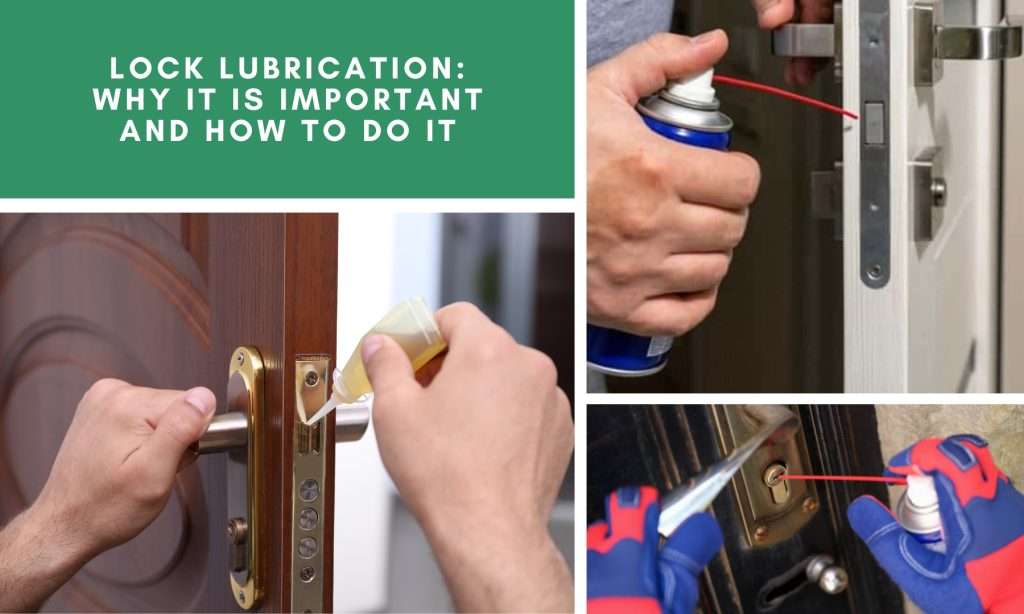Locks are important to keep our homes, workplaces, and valuables safe. Yet, we often forget how important it is to keep locks in good shape, especially when lubricating. The internal mechanism of a lock makes it work well. However, if you do not care for it, it can wear out, rust, and eventually stop working. In this blog, we look at the often-overlooked practice of lock lubrication. Also, we explain why it is important and give you helpful tips on doing it right so your locks last longer and work better.
Why Lock Lubrication Matters
Lock lubrication is important for more than one reason. First, it ensures your lock works smoothly and keeps them from sticking or getting stuck. Over time, dust, dirt, and rust can build up in the lock system, making it less effective. Putting lubricant on the lock helps clean it and eliminate obstructions so that it can work smoothly.
Also, greasing reduces the friction between the lock’s parts, which makes it last longer and reduces wear and tear. Regular lock lubrication can prevent rust and corrosion, especially outside or in high-humidity places where locks are more likely to break. With some TLC, your locks can stand the test of time.

Types of Lock Lubricants
There are various types of lock lubricants available on the market. The choice of lubricant depends on the specific requirements of the lock and its components. Here are some common types of lock lubricants:
- Graphite lubricant
- Silicone lubricant
- Teflon (PTFE) lubricant
- White lithium grease
- Oil-based lubricants
How to Do Lock Lubrication Properly
Step 1: Get the tools and supplies you need.
Make sure you have the following things before you start:
- Graphite grease or a lubricant made for locks (do not use WD-40 or similar products because they attract dirt and dust)
- A key or a thin tool like a straw or tube to put the lubricant in the lock
- A rag or paper towel for wiping away any extra lubricant
Step 2: Get the area ready.
Clean up the area around the lock and ensure no dirt, dust, or other debris could get into it while doing the lubrication. That will help keep any foreign objects from making the lock stop working.
Step 3: Put the key in it.
Put the key in the lock and turn it a few times to move any dirt or dust around inside the lock. This step helps get the lock ready for greasing.
Step 4: Apply the lubricant.
Follow one of the steps below based on the type of lube you have:
Graphite lubricant:
- Remove the key from the lock.
- Shake the graphite grease bottle to ensure the powder is evenly spread.
- Put the graphite lubricant tube or straw into the lock’s keyway or keyhole.
- Gently squeeze the bottle or other container to get some graphite grease into the lock and ensure it reaches all the parts inside.
- Do not grease too much because too much graphite can build up messily.
- If you need to, move the lock back and forth with the key to help the oil get everywhere.
Lock-specific lubricant:
- Remove the key from the lock.
- Apply a small amount of the lock-specific lubricant onto the key or the thin applicator, ensuring that it is well-coated but not dripping.
- Put the lubricated key or applicator into the lock’s keyway or opening.
- Slowly and carefully put the key or applicator into the lock. That lets the lube get to the parts inside the lock.
- Do not grease too much because it can cause buildup and make dirt stick.

Step 5: Work the lock.
After applying the lubricant, put the key in and take it out a few times to work it into the lock’s system. This motion helps spread the oil widely and ensures it reaches all the important parts.
Step 6: Wipe off any excess lubricant.
Wipe the outside of the lock carefully with a rag or paper towel to clear away any extra grease. Dirt and other things can get stuck in locks with too much grease.
Step 7: Test the lock.
Lastly, put the key in the lock and turn it to see if it works. It should move easily and not stick or get in the way. If you keep having problems, you might need to talk to a professional locksmith.
Local Locksmith Near Me
Are your locks sticking and malfunctioning due to a lack of lubrication? Worry no more. Sherlock’s Locksmith is here to help ensure your locks get the professional care they need. We are a trusted locksmith service in Pittsburgh, PA, offering fast, reliable solutions for every lock problem. Our full range of essential commercial locksmith and residential locksmith services includes lock installation, repairs, rekeying, and emergency lockout assistance.
By letting Sherlock’s Locksmith take care of your lock upkeep and security needs, you can rest easy knowing your locks are in good hands. So, do not wait to call Sherlock’s Locksmith to ensure your residential or commercial locks stay in good shape and give you the safety and peace of mind you deserve. Ask us for a free estimate of our locksmith services today.









